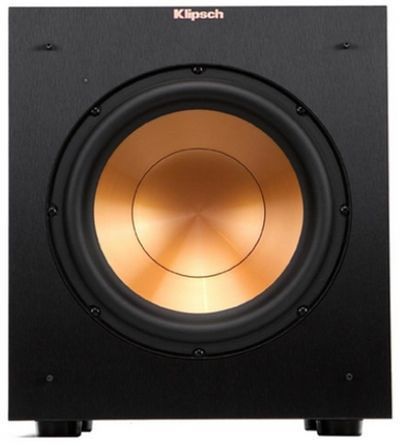The Klipsch Reference 110SW subwoofer was only slightly outperformed by the best models we tested. The 10-inch copper spun woofer did well in both our movie and music listening tests, and it looks great too. We had to turn the volume knob up a bit more than we did on the best performers, but not enough that we felt like the subwoofer was pushed too hard or close to distorting. The 110SW is small enough to fit into tight spaces and powerful enough to fill large areas with accurate and pleasing low-end boom.
This subwoofer produced some of the best results in our movie listening test. We watched a clip from “Rogue One: A Star Wars Story” that has short bursts of low-frequency effects. We could easily hear the difference between a clash of lightsabers and the sound of blaster fire. This is a sign of quick and accurate speaker movements.
The one problem area for this subwoofer was the highest frequencies. Acoustic instruments that are low enough to need subwoofer reinforcement sounded unnaturally boomy. One way to fix this problem is to set the crossover at 100Hz or lower.
Don’t let the woofer’s modest 200-watt continuous power rating fool you. The Klipsch 110SW is capable of 114 decibels (db) of acoustic output – that is loud enough to permanently damage your hearing if you’re exposed to it for too long. The other models we reviewed with similar power ratings either couldn’t match the 85 db volume of the floor standing speakers we paired them with or needed to be turned to near-maximum volume to do so. The all-digital amplifier in this active subwoofer offered some of the most accurate frequency reproduction in our tests.
The subwoofer’s MDF cabinet is the largest and heaviest of all the 10-inch models we tested. Luckily, subwoofers rarely need to be moved once they are set up, and a heavy cabinet is a good indicator of durability. The cabinet has a black polymer veneer that hides fingerprints and dust well. Since it has front-firing ports, you can place this subwoofer close to a wall without causing unwanted early reflection, which pushes air back into the port and creates port noise.
The Klipsch 110SW and the Polk Audio DSW 660 are the only two subwoofers we tested with a proprietary wireless connection. For an additional $129, you can place this subwoofer anywhere in your entertainment room without needing to connect any cables to an AV receiver. We used a third-party wireless subwoofer kit to see if there was any loss in quality or volume associated with a wireless connection; the quality difference was negligible and what volume loss there was can be easily made up with a slight volume knob adjustment.
Klipsch offers a five-year speaker warranty and a two-year amplifier warranty. That’s average for a subwoofer in this price range and should be plenty of time to notice any manufacturer defects or problems with workmanship. You can contact the manufacturer by phone or email if you have questions, and there is an exhaustive amount of info on the FAQs page on the Klipsch website, including troubleshooting guides and recommendations for how to get the best sound.

